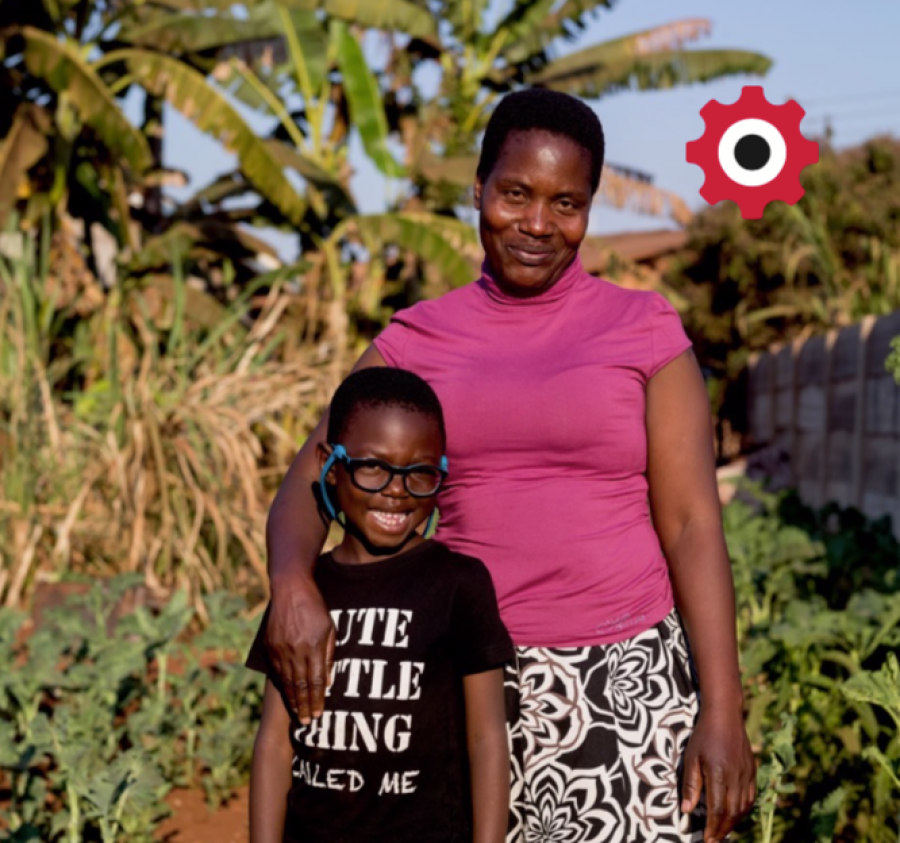Page content
Zimbabwe Eyecare And Learning (ZEAL) Study is one of four novel trials being delivered in four countries (Bangladesh, India, Vietnam and Zimbabwe) known as ENGINE (Eyecare Nurtures Good-health, Innovation, driviNg-safety and Education). ENGINE is supported by the Wellcome Trust.
ENGINE will assess the specific ways in which eye care delivered at crucial moments across the life-course can help improve the lives of people of all ages by achieving the Sustainable Development Goals and bring about meaningful policy change in these countries. More specifically, ZEAL is a collaborative effort between Ulster University, Queens University Belfast, and the University of Zimbabwe, and will work with collaborators who direct Zimbabwe’s national vision screening programme to find solutions to challenges associated with long-sightedness (also known as hyperopia) in primary school aged children.
Research from Asia has shown that correcting short-sightedness (also known as myopia) in children also leads to an improvement in their overall educational performance.1,2 However in many other parts of the world, including Africa, hyperopia is the more common refractive error,3–7 which the evidence suggests may be associated with reduced near vision function and lower reading scores in children.8,9 To date there are no trials that assess the educational impact that correcting hyperopia could have in school aged children,10 therefore this is not yet well understood.
With this in mind, the ZEAL study was designed to answer the following questions:
Study Aims
- To find out how common hyperopia is among primary school children in Zimbabwe
- To assess the accuracy of novel, low-cost equipment to detect hyperopia in these children
- To examine the impact of uncorrected hyperopia on children’s reading skills compared to their classmates without vision problems
- To examine the impact of glasses wear for hyperopia on children’s reading skills
- To compare the compliance of glasses wear among children that are newly diagnosed with hyperopia and short-sightedness (also known as myopia)
The study protocol has been developed and approved by ethics committees in the UK and Zimbabwe, and recruitment and data collection will commence in June 2022.
More Information
You can download the ZEAL Brochure and the ENGINE Slide Deck from the Queens University website.
References
- Ma X, Zhou Z, Yi H, Pang X, Shi Y, Chen Q, et al. Effect of providing free glasses on children’s educational outcomes in China: Cluster randomized controlled trial. BMJ
- Ma Y, Congdon N, Shi Y, Hogg R, Medina A, Boswell M, et al. Effect of a Local Vision Care Center on Eyeglasses Use and School Performance in Rural China A Cluster Randomized Clinical Trial. 2018; Available from the JAMA Network website.
- Demir P, Baskaran K, Theagarayan B, Gierow P, Sankaridurg P, Macedo AF. Refractive error, axial length, environmental and hereditary factors associated with myopia in Swedish children. Clin Exp Optom [Internet]. 2021 Mar 2 [cited 2021 Apr 16];1–7. Available from Taylor and Francis Online.
- Kleinstein RN, Jones LA, Hullett S, Kwon S, Lee RJ, Friedman NE, et al. Refractive error and ethnicity in children. Arch Ophthalmol. 2003 Aug 1;121(8):1141–7.
- O’Donoghue L, McClelland JF, Logan NS, Rudnicka AR, Owen CG, Saunders KJ. Refractive error and visual impairment in school children in Northern Ireland. Br J Ophthalmol. 2010 Sep;94(9):1155–9.
- French AN, O’Donoghue L, Morgan IG, Saunders KJ, Mitchell P, Rose KA. Comparison of refraction and ocular biometry in European Caucasian children living in Northern Ireland and Sydney, Australia. Investig Ophthalmol Vis Sci. 2012 Jun;53(7):4021–31.
- Hashemi H, Fotouhi A, Yekta A, Pakzad R, Ostadimoghaddam H, Khabazkhoob M. Global and regional estimates of prevalence of refractive errors: Systematic review and meta-analysis. J Curr Ophthalmol. 2018 Mar 1;30(1):3–22.
- Kulp T, Ciner E, Maguire M, Moore B, Pentimonti J, Pistilli M, et al. Uncorrected Hyperopia and Preschool Early Literacy: Results of the Vision In Preschoolers-Hyperopia In Preschoolers (VIP-HIP) Study The Vision In Preschoolers-Hyperopia In Preschoolers (VIP-HIP) Study Group HHS Public Access. Ophthalmology. 2016;123(4):681–9.
- Shankar S, Evans MA, Bobier WR. Hyperopia and emergent literacy of young children: Pilot study. Optom Vis Sci. 2007;84(11):1031–8.
- Mavi S, Chan VF, Virgili G, Biagini I, Congdon N, Piyasena P, et al. The Impact of Hyperopia on Academic Performance Among Children: A Systematic Review. Asia-Pacific J Ophthalmol (Philadelphia, Pa). 2022;11(1):36–51.

















